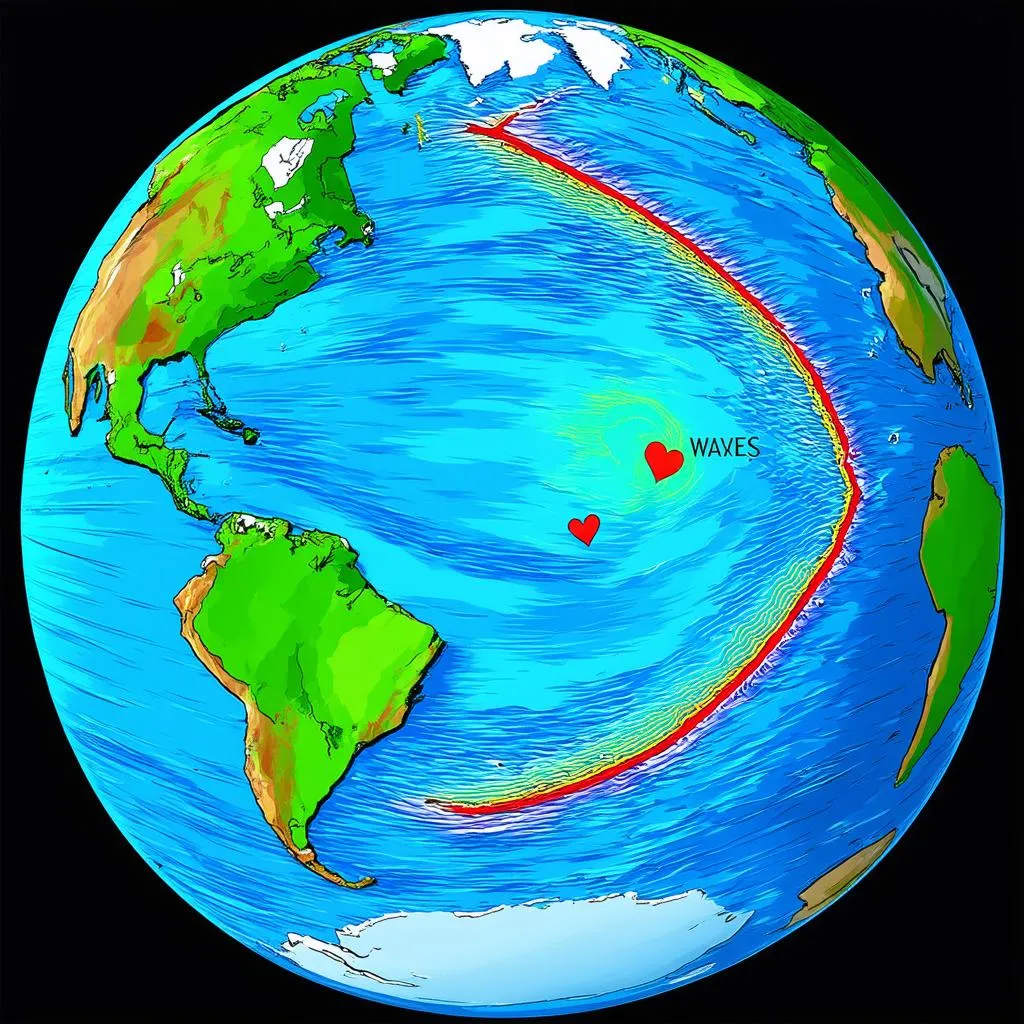Have you ever felt the ground shake beneath your feet? Or stood in awe of the Earth’s raw power as you witnessed news footage of a devastating earthquake? These incredible displays of energy are caused by seismic waves, vibrations that ripple through the Earth. Understanding how these earthquake waves travel can help us comprehend the forces shaping our planet and prepare for potential hazards.
Unraveling the Mysteries of Earthquake Waves
Imagine standing near the Golden Gate Bridge in San Francisco, a city known for its seismic activity. Suddenly, you feel a jolt, and the ground begins to sway. This is the result of earthquake waves, radiating outwards from the earthquake’s focus, the point within the Earth where the rupture begins.
Types of Earthquake Waves
There are two main types of earthquake waves:
1. Body Waves: These waves travel through the Earth’s interior.
- P-waves (Primary waves): The fastest type of wave, P-waves are compressional, causing the ground to move back and forth in the same direction as the wave travels. Think of a slinky being pushed and pulled – that’s similar to how P-waves propagate.
- S-waves (Secondary waves): Arriving after P-waves, S-waves are shear waves, causing the ground to move perpendicular to the direction of wave travel. Imagine shaking a rope up and down – this mimics the motion caused by S-waves.
2. Surface Waves: These waves travel along the Earth’s surface and are responsible for the most damage.
- Love waves: The fastest surface waves, Love waves move the ground side-to-side, similar to S-waves but confined to the Earth’s surface.
- Rayleigh waves: These waves cause the ground to move in a rolling motion, like waves on the ocean.
Factors Affecting Wave Travel
Several factors influence how earthquake waves travel, including:
- Rock and Soil Type: Waves travel at different speeds through different materials. For instance, they move faster through hard rock than through loose soil.
- Temperature and Pressure: As depth increases within the Earth, so do temperature and pressure, influencing the speed and direction of seismic waves.
- Discontinuities: Boundaries between different layers within the Earth can cause waves to reflect or refract (bend), much like light bending through a prism.
Studying Earthquake Waves: A Window into the Earth
Seismologists, scientists who study earthquakes, use instruments called seismographs to detect and record seismic waves. By analyzing the arrival times and characteristics of these waves at different locations, they can pinpoint the earthquake’s epicenter, the point on the Earth’s surface directly above the focus. Moreover, studying how waves travel through the Earth’s interior provides valuable insights into its structure and composition.
Planning Your Travels? Consider Seismic Activity
While the awe-inspiring power of earthquakes reminds us of nature’s might, it’s essential to be aware of seismic hazards, especially when traveling.
Here are some tips:
- Research Your Destination: Before you go, check if your destination is located in an earthquake-prone area. Websites like the United States Geological Survey (USGS) provide information on recent earthquakes and seismic hazard maps.
- Pack an Emergency Kit: Include essentials like water, non-perishable food, a first-aid kit, a whistle, and a flashlight.
- Know the Safety Procedures: Familiarize yourself with earthquake safety measures, such as “Drop, Cover, and Hold On” during shaking.
 Earthquake Waves Illustration
Earthquake Waves Illustration
FAQs: Unraveling Common Queries
1. How fast do earthquake waves travel?
The speed of earthquake waves varies depending on the type of wave and the material it’s traveling through. For instance, P-waves can travel up to 13 km/s in the Earth’s crust, while S-waves travel a bit slower. Surface waves are the slowest. For a deeper dive into this topic, explore our article on “How Fast Do Earthquake Waves Travel?” at [link to https://travelcar.edu.vn/how-fast-do-earthquake-waves-travel/ using relevant anchor text like “how fast earthquake waves travel”].
2. Can animals sense earthquakes?
There have been numerous anecdotal accounts of animals behaving strangely before earthquakes, leading some to believe they can sense them. While scientific evidence is still inconclusive, some theories suggest animals may be able to detect subtle changes in the Earth’s magnetic field or gas emissions that precede earthquakes.
3. What are the most earthquake-prone areas in the world?
The Earth’s surface is divided into tectonic plates, and most earthquakes occur along the boundaries of these plates. The “Ring of Fire,” a horseshoe-shaped region bordering the Pacific Ocean, is known for its high seismic activity. Other seismically active areas include the Himalayan region and the Alpide belt, which stretches from the Mediterranean Sea to the Himalayas.
 Earthquake Preparedness Kit
Earthquake Preparedness Kit
Feng Shui and Earthquakes: Finding Harmony with the Earth
In Feng Shui, the ancient Chinese practice of harmonizing living spaces with the natural world, earthquakes are seen as powerful reminders of the Earth’s energy. While Feng Shui can’t prevent earthquakes, its principles emphasize grounding and stability, encouraging us to live in harmony with our environment.
Exploring the World, Respecting its Power
As you plan your next adventure, remember that travel is not just about visiting new places but also about understanding and respecting the forces that shape our planet. By learning about earthquake waves, preparing for potential hazards, and appreciating the Earth’s incredible power, we can travel more consciously and connect with our planet on a deeper level.
Feel free to share your thoughts, experiences, or any questions you may have in the comments section below. Safe travels!
For more insightful articles on travel and beyond, explore the world of knowledge at travelcar.edu.vn. Discover hidden gems like Ha Long Bay, wander through the bustling streets of Hanoi, or immerse yourself in the rich culture of Hoi An – your next adventure awaits!